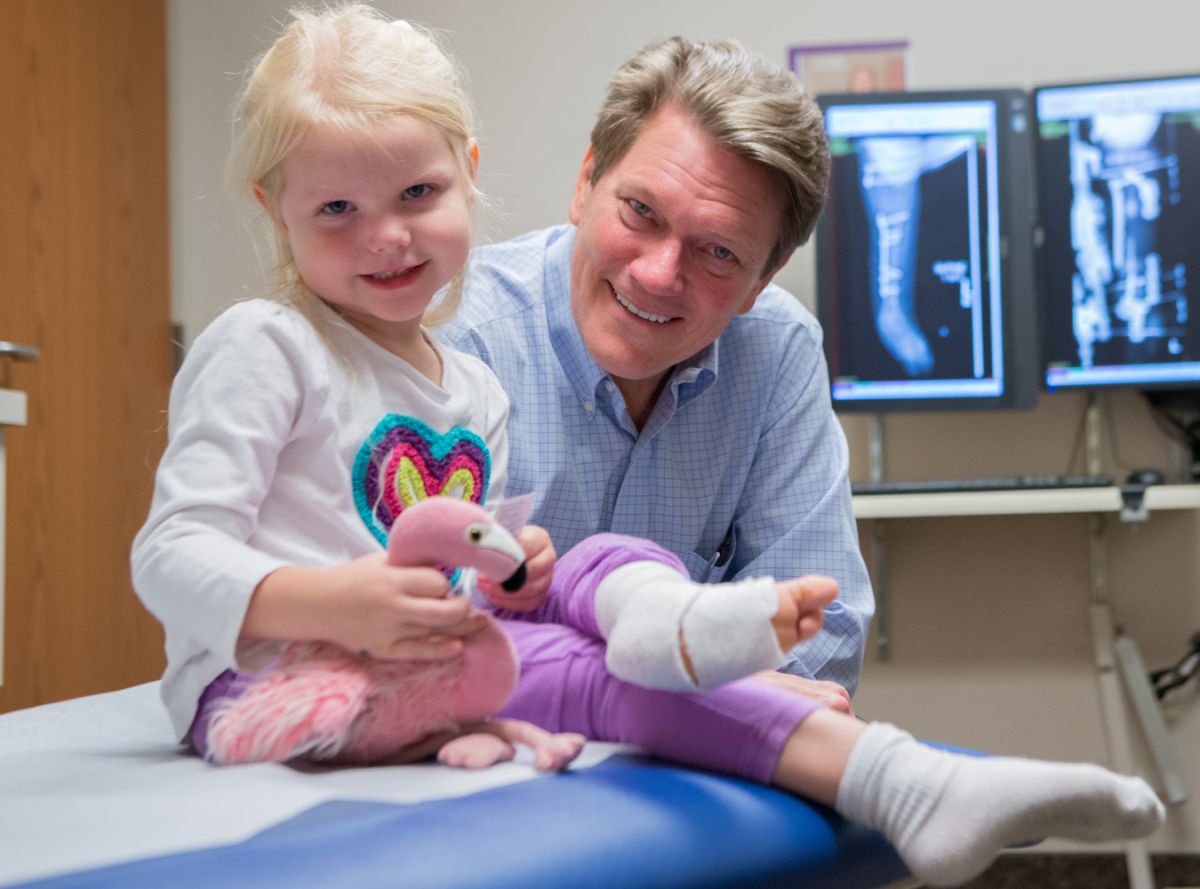What is a limb length discrepancy and what is a limb difference?
Limb length discrepancies and limb differences are conditions in which arms or legs (known as limbs) are unequal in length or show other differences. This might mean that one arm or leg is longer or shorter than the other. These limb differences and length discrepancies can sometimes be corrected with surgery.
What causes limb length conditions?
Limb length conditions can result from:
- Congenital (present from birth) disorders of the bones, muscles or joints.
- Disuse or overuse of the bones, muscles, or joints caused by illness or disease.
- Diseases, such as bone cancer.
- Issues of the spine, shoulder, or hip.
- Traumatic injuries, such as severe fractures that damage growth plates.
What are the signs and symptoms of a limb length condition?
Leg length discrepancy symptoms can include difficulty walking. If your child has a leg length discrepancy or arm length discrepancy, you might notice that they have difficulty engaging in everyday activities.
How are limb length conditions diagnosed?
In many cases, signs of limb length conditions are subtle and only noticeable in certain situations, such as when buying clothes or playing sports. An evaluation should be conducted if your infant, child, or teen shows signs of difficulty using their arms or legs.
Exams by qualified pediatric orthopedic providers can reduce the likelihood of long-term complications and increase the likelihood that the condition can be managed without the use of surgery. In most cases, very mild limb length discrepancies require no formal treatment at all.
As leaders in pediatric orthopedics, skilled surgeons and nurse practitioners at Gillette Children’s are experts in diagnosing, treating and managing limb length conditions—whether your child is born with the condition or it develops over time.
How are limb length conditions treated?
Treatments for limb-length discrepancies and differences vary, depending on the cause and severity of your child’s condition. Orthopedic surgeons at Gillette are experts in typical and atypical growth and development, which helps in planning treatments that offer your child a lifetime of benefits.
Treatments might include monitoring growth and development, providing noninvasive treatments or therapy, and providing a combination of orthopedic surgical procedures.
In cases where surgery isn’t necessary, orthopedists might monitor your child and plan noninvasive treatments, such as:
Surgical treatments vary in complexity. Sometimes the goal of surgery is to stop the growth of the longer limb. Other times, surgeons work to lengthen the shorter limb. Learn more about some of the surgeries available to correct limb length conditions.
To date, alternative treatments like chiropractic care or physical therapy alone have not measurably changed the progression of or improved limb length conditions. However, your child might have physical or occupational therapy to address related conditions, such as muscle weakness or inflexibility, or to speed recovery following a surgical procedure.
Limb Length Care at Gillette Children's
When you choose Gillette for comprehensive diagnosis, treatment and management of limb length conditions, your family will benefit from:
- Facilities and technology designed specifically for people who have limb length conditions and disabilities.
- One of the nation’s highest concentrations of pediatric orthopedic surgeons who focus on the needs of children.
- A family-centered team that will work closely with your primary care providers, teachers, and school or community therapists.
If your child has a limb length condition, we’ll help you coordinate the services and specialties you need. For comprehensive limb-length conditions treatment, your family might work with experts in:
 Home Page
Home Page


